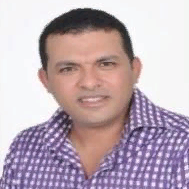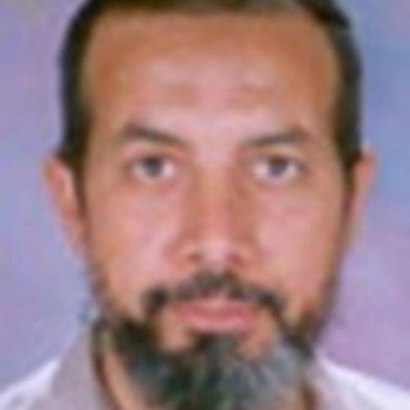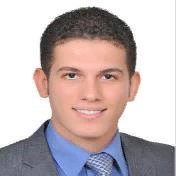International Journal of Image, Graphics and Signal Processing (IJIGSP)
IJIGSP Vol. 10, No. 10, 8 Oct. 2018
Cover page and Table of Contents: PDF (size: 1067KB)
Evaluation of Reconstructed Radio Images Techniques of CLEAN De-convolution Methods
Full Text (PDF, 1067KB), PP.31-39
Views: 0 Downloads: 0
Author(s)
Index Terms
CLEAN, Deconvolution, Image Reconstruction, Compressive Sensing, Interferometry, Image Processing
Abstract
In Modern Radio Interferometry Various Techniques have been developed for the Reconstruction of the high-dimensional Data scalability Radio Images. CLEAN Variants are widely used in Radio Astronomy because of its computationally efficiency and easiness to understand. CLEAN deconvolves different polarization component images independently and nonlinearly from the point source response by removing the dirty beam pattern form the images. CLEAN Algorithms have been evaluated in this paper for both single field "Deconvolution" (Hogbom, Clark, Clark Stokes, and Cotton Schwab) and multi-field "Deconvolution" (Multi Scale, Multi Frequency and Multi Scale Multi frequency). Based upon simulation results, it is clear that more updated techniques are needed for Large radio telescopes to face big data, extended sources emissions and fast imaging issues which are using dimensionality reduction from the perspective of the compressed sensing theory and to study its interplay with imaging algorithms which are designed in the context of convex optimization combined with sparse representations.
Cite This Paper
M.A. Mohamed, A.H. Samrah, Q.E. Elgamily, " Evaluation of Reconstructed Radio Images Techniques of CLEAN De-convolution Methods", International Journal of Image, Graphics and Signal Processing(IJIGSP), Vol.10, No.10, pp. 31-39, 2018. DOI: 10.5815/ijigsp.2018.10.03
Reference
[1]J.Ott and J. Kern, "CASA Synthesis & Single Dish Reduction ", National Radio Astronomy Observatory, vol.Release 4.7.2, pp.288-336, 2017.
[2]A. R. Thompson, J.M. Moran, G. W. Swenson, "Interferometry and Synthesis in Radio Astronomy", Springer, vol. Third Edition, pp.551-598, 2017.
[3]J.A. HOGBOM, "Aperture Synthesis with A Non-Regular Distribution of Interferometer Baselines ", Astron.Astrophsys, vol.15, pp. 417-426, 1974.
[4]T. J. Cornwell, "Hogbom’s CLEAN algorithm. Impact on astronomy and beyond", Astronomy & Astrophysics Special issue, vol.15, no.417, pp.1, 2009.
[5]B. G. Clark, "An Efficient Implementation of the Algorithm CLEAN", Astron.Astrophsys, vol.89, pp.377-378, 1980.
[6]F. R. Schwab, W. D. Cotton, "Global Fringe Search Techniques for VLBI", The Astronomical, vol.88, no.5, pp.688-694, 1982.
[7]T.J. Cornwell, "Multi-Scale CLEAN deconvolution of radio synthesis images", IEEE Journal of Selected Topics in Sig. Proc., vol.2, no.5, pp.793-801, 2008.
[8]R. J. Sault, M.H. Wieringa, "Multi-frequency Synthesis Techniques in Radio InterferometricImaging", Astronomy and AstroPhysics, vol.108,pp.585-594, 1994.
[9]H. Junklewitz, M. R. Bell and T. EnBlin, "A new approach to multi-frequency synthesis in radio interferometry", Astronomy and AstroPhysics, vol.581, no.59, pp.11, 2015.
[10]R. Ammanouil, A. Ferrari, R. Flamary , C. Ferrari, and D. Mary , "Multi-frequency image reconstruction for radio-interferometry with self-tuned regularization parameters" ,IEEE Sig. Proc. Con.(EUSIPCO),Kos-Greece, 2017.
[11]U. Rau and T. J. Cornwell, "A multi-scale multi-frequency deconvolution algorithm for synthesis imaging in radio interferometry", Astronomy & Astrophysics, vol.532, no.A71, 2011.
[12]F. Li, T. J. Cornwell, F. de Hoog, "The application of compressive sampling to radio astronomy", Astronomy & Astrophysics, vol.528, no.A31, 2011.
[13]R. A. Shaw, F. Hill, & D. J. Bell,” Astronomical Data Analysis Software and Systems XVI “, J. P. McMullin , B.Waters, D. Schiebel, W.Young, & K. Golap, (ASP Conf. Ser. 376), (San Francisco, CA: ASP), p.127mTucson,Arizona,USA,2007.
[14]J. Papp, "Quality Management in the Imaging Sciences", ELSEVIER, vol.5, 2015.
[15]D. Briggs, "High Fidelity Deconvolution of Moderately Resolved Sources",Ph. D. 1995.
[16]Y. C. ELDAR, G. KUTYNIOK, "Compressed Sensing Theory and Applications", CAMBRIDGE, vol.1, 2012.
[17]S. Elahi, M. kaleem, H. Omer, " Compressively sampled MR image reconstruction using generalized thresholding iterative algorithm ",ELSEIVER Journal of Magnetic Resonance,vol.286,pp.91-98.,2017.
[18]K. Wei, "Fast Iterative hard thresholding for compressed sensing",IEEE Sig. Proc.,vol.22,no.5 ,pp.593-597, 2014.
[19]J. N. Girard, H. Garsden, J. L. Starck, S. Corbel, A. Woiselle, C.Tasse, J. P. McKean, J. Bobin ,"Sparse representations and convex optimization as tools for LOFAR radio interferometricimaging",Journal of Instrumentation,vol.10,no.8,2015.
[20]S. V. Kartik , R. E. Carrillo ,J. P. Thiran and Y. Wiaux ," A Fourier dimensionality reduction model for big data interferometric imaging" , Royal Astronomical Society,vol.468,no.2,pp.2382-2400,2017.
[21]S. Bhatnagar1, U. Rau1, D. A. Green2, and M. P. Rupen," Expanded Very Large Array observations of galactic supernova remnants: wide-field continuum and spectral-index imaging",The Astrophysical Journal Letters ,vol.739,no.1, 2011.
[22]A. Onose , R. E. Carrillo , A. Repetti , J. D. McEwen , J. Thiran , J. Pesquet , Y. Wiaux, "Scalable splitting algorithms for big-data interferometric imaging in the SKA era", IEEE, vol.462, no.4, pp.4314-4335, 2016.
[23]R. Braun, “Understanding synthesis imaging dynamic range”, Astronomy & Astrophysics, vol.551, no.A91, 2013.
[24]M. RANI, S. B. DHOK, AND R. B. DESHMUKH,” Systematic Review of Compressive Sensing: Concepts, Implementations and Applications”, IEEE, vol.6.pp.4875-4894, 2018.


